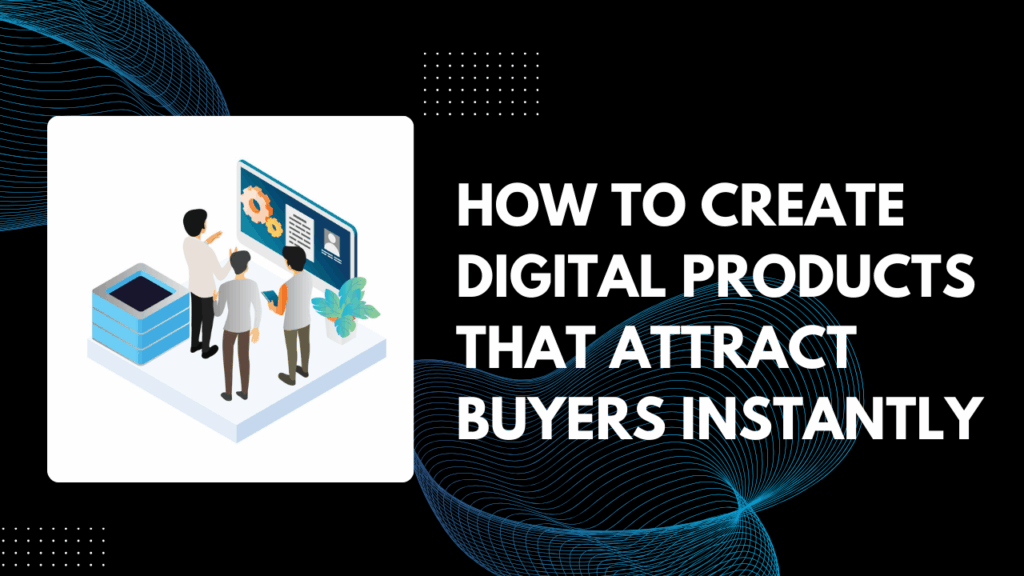Digital products are everywhere, whether you’re streaming your favorite show, downloading an eBook, or using an app to organize your day. Unlike physical goods, digital products exist in the online world, delivered instantly with just a few clicks. They fuel businesses, empower creators, and shape how we work, learn, and entertain ourselves.
In the fast-paced digital economy, these products have become much more than just a convenience. They have changed the way entrepreneurs sell their knowledge, artists display their work, and companies can scale. The options are endless in terms of products — software, online courses, digital art/products, NFTs, and more.
But what is a digital product? How do digital products create value? And why are they such a powerful tool in today’s economy? In this article we are going to break down every aspect of these virtual goods!
Table of Contents
What are Digital Products?
Digital products are goods and services that are distinguished by their intangible character. Digital products can be sold on a number of platforms, including websites, online marketplaces, and e-commerce sites.
Although they don’t have a tangible form, digital products are occasionally offered for sale on physical media. On the other hand, digital products are frequently sold as digital files and accounts that can be bought online through various channels (such as social networking, online stores, etc.).
Digital items are getting increasingly lucrative. For instance, it is anticipated that the worldwide software market will reach $608 billion this year, the e-learning market will reach $374.3 billion by 2026, and the revenue from ebook publications will reach $6.95 billion by 2025.
Types of Digital Products
Digital products come in many shapes and forms. Let’s take a look at some of the most commonly produced and used digital products.
Software
The software sector is flourishing as people in the current world utilize computers and other technology daily, and using applications has become commonplace. As a result, software is extremely profitable and one of the most valuable and well-liked digital products available.
There are several choices for developing and marketing software goods, regardless of the size of your e-commerce company, including mobile apps, Windows / Mac apps, web-based apps (SaaS), video games, website themes, and plugins and extensions.
E-Learning Products
These days, online courses are very popular. To the extent that e-learning is a separate industry in and of itself. As a result, the industry is experiencing a great deal of innovation, with conventional educational establishments beginning to experiment with novel approaches to offering their courses online.
There are numerous approaches to developing your own online courses that can be tailored to your sector and organization. Some e-commerce sites offer instructional materials, like training manuals, that are marketed as supplementary products to help with the use of a tangible item.
You can offer educational resources, social media courses, video courses, boot camps, and training guides.
E-Books
E-books and guidebooks are some of the more popular digital products out there. They are simple to produce, as they mostly just require written text and inexpensive images to compose. These digital goods are easy to distribute and are also hugely versatile.
They can be accessible on a variety of technological devices, including computers, tablets, cellphones, and e-readers, and their development costs are far lower than those of a traditional book, which is why so many consumers adore them.
The different kinds of ebooks being sold online include workbooks, textbooks, manuals, fiction and non-fiction books, PDF guides, case studies, and sheet music.

Video Content
There is a reason why there is so much video content on the internet. It is easily accessible, interesting, and an efficient format for disseminating information. Everyone enjoys watching videos and is frequently willing to pay for them.
There are several choices for selling videos online, regardless of whether you’re creating them for amusement purposes or as instructional films. These include advertisements, product or video game reviews, stock footage, drone footage, animations, special effects templates, and video courses/training.
Services
Selling your services is one of the greatest methods to get income online. Regardless of your business, you can create an online store to offer your services, just like you would with any other type of goods.
You can sell a variety of services online, such as graphic and logo design, social media services, consultation, data entry, workout and nutrition plans, branding, video editing, web services, and brand audits.
Non-Fungible Tokens (NFTs)
You’ve probably heard about the online craze for NFTs, which are non-transferable data units that are kept on a blockchain and are available for purchase and sale. NFTs aren’t limited to artists and fans of digital art, either. These digital assets are sold by numerous e-commerce companies, and the market is currently worth $41 billion.
Since the trend is still relatively new and developing, e-commerce companies are only beginning to explore all of the potential applications and sales channels.
Advantages of Selling Digital Products
We have broken down the main plus points of digital products that truly make them stand out against physical ones.
No Shipping Procedure or Storage Fees
A digital product doesn’t require packing or shipping because it is entirely intangible. As a result, you will save a significant amount of time, money, and resources by doing away with the full shipping procedure, including warehouse expenses.
No Inventory Hassles
Not having to worry about inventory is another fantastic benefit of selling digital goods as opposed to physical ones. You will also never run out of your product! This will not only save you money on labor, which is always expensive, but it will also save you a great deal of time, particularly for companies that frequently operate around the clock.
High-Profit Margins
Except for NFTs, you typically only create one version of a digital product that can be bought an infinite number of times. Because of this, they are typically less expensive to produce than tangible goods, resulting in a significant profit margin.
Easy to Scale

The ease of scaling digital products is one of their biggest advantages. When your digital goods are posted online and easily accessible, individuals in the majority of other nations will be able to buy them without any issues. This universal access helps overcome time and location constraints.
Environmental Impact
Emissions from transportation, manufacturing waste, and resource extraction are all factors associated with physical products. Although they nevertheless influence the environment, digital products may have a smaller carbon footprint.
Other than this, digital products also allow you to work across several different information, communication, and distribution channels. Prototyping and iteration can happen quickly thanks to the digital world. Based on consumer feedback, developers may rapidly develop, test, and improve digital goods. Users of digital products can always get the newest features, security patches, and enhancements thanks to real-time updates.
Digital Product Lifecycle
When working on digital offerings, product managers need to keep in mind that they are not nearly as static as physical items. One of the main reasons these goods can fail is if this is not given enough attention.
Digital products are not approached with the intention of producing a “finished product.” That is only applicable to tangible goods, and not even in all situations. Digital items are always changing. As you gain new insights into the demands and behavior of your customers, you keep improving what you have to offer. You can modify your products in accordance with the data you’re receiving. However, physical products do not change in the same manner. Over time, they usually grow outdated and are replaced.
It all begins with an idea, which is further developed and enhanced with a vision, market, strategy, budgeting, user research, motivation to build a digital product, and a value proposition.
Next is the design and development phase, where usability checks are done, prototypes are developed, preliminary research is done, and the first MVP (Minimum Viable Product) is established. After that, a digital product moves into the growth phase, where assumptions are made, flaws are found, and decent changes to the product are made.
The subsequent phase, maturity, is all about maintaining the market presence you have built and having to continue developing the product. This allows the makers to update and change the product due to the changing market and demands and, in essence, to keep from becoming any older. In the downhill phase, the product becomes obsolete and loses its market position and value because it cannot meet new levels of value.
Understanding how a digital product is evolving, making accurate predictions, doing customer research, and measuring changes, for example, by employing the right metrics, are all necessary for strategic digital product management.
How to Create Great Digital Products
Digital products must constantly be valuable to users and meet their needs. They must offer a desirable experience, be highly usable, and have an edge to make them unbeatable and long-lasting.

A good digital product offers its target audience an appealing solution to a single, distinct problem. These products should be consistent, which means that the user experience is the same across all channels (for example, a product must offer the same benefits when it is introduced to desktop and mobile online stores).
A quality digital product is concise. Its functionality, communication, and problem-solving should therefore be easy, quick, and appealing. It must have measurable features, functions, and outcomes. It should be compatible and guarantee a high level of usability and a very positive user experience. This can be achieved only when the best patterns and guidelines are applied throughout the design, development, and creation of the digital product.
Digital products should be aesthetically pleasing and innovative, evoking strong positive emotions, such as a strong sense of attachment. They should match the context at hand by adapting their mode of operation to individual needs in real-time, all the while predicting future preferences based on a set of predictors. These predictors can include preferences, behavior, location, and transaction history.
The Time is Now!
Digital products are revolutionizing the way we create, sell, and consume content. With limitless potential and low overhead costs, they open doors for entrepreneurs, businesses, and creatives alike. Whether you’re looking to turn your expertise into an online course, sell unique designs, or develop software, the opportunities are endless. As the digital economy continues to expand, now is the perfect time to explore, innovate, and tap into this growing market!
Have a great idea? Let EvolveDash bring it to life! We specialize in empowering businesses with innovative digital solutions. We create custom mobile apps and build user-friendly websites, providing tailored solutions to meet your needs.
With over 100 satisfied clients and 450 successful projects, our team has the expertise needed to help your business stand out in a competitive market. Reach out to us today
FAQs
- What are examples of digital products?
Digital products include ebooks, online courses, software, music, design templates, and NFTs. They exist in a digital format and can be accessed or downloaded instantly.
- Can digital products be resold?
Some digital products come with resale rights, while others are strictly for personal use. Always check the licensing terms before selling or redistributing.
- Are digital products profitable?
Yes! Since they have no inventory costs and can be sold repeatedly, digital products offer high-profit margins and unlimited earning potential.
- How do I create a digital product?
Start by identifying a skill, knowledge, or creative asset you can offer. Then, develop it into a downloadable or accessible format, such as a PDF, video, or software.
- Where can I sell digital products?
You can sell them on platforms like Etsy, Gumroad, Shopify, and even your own website. Many marketplaces also help with hosting, payment processing, and distribution.



















